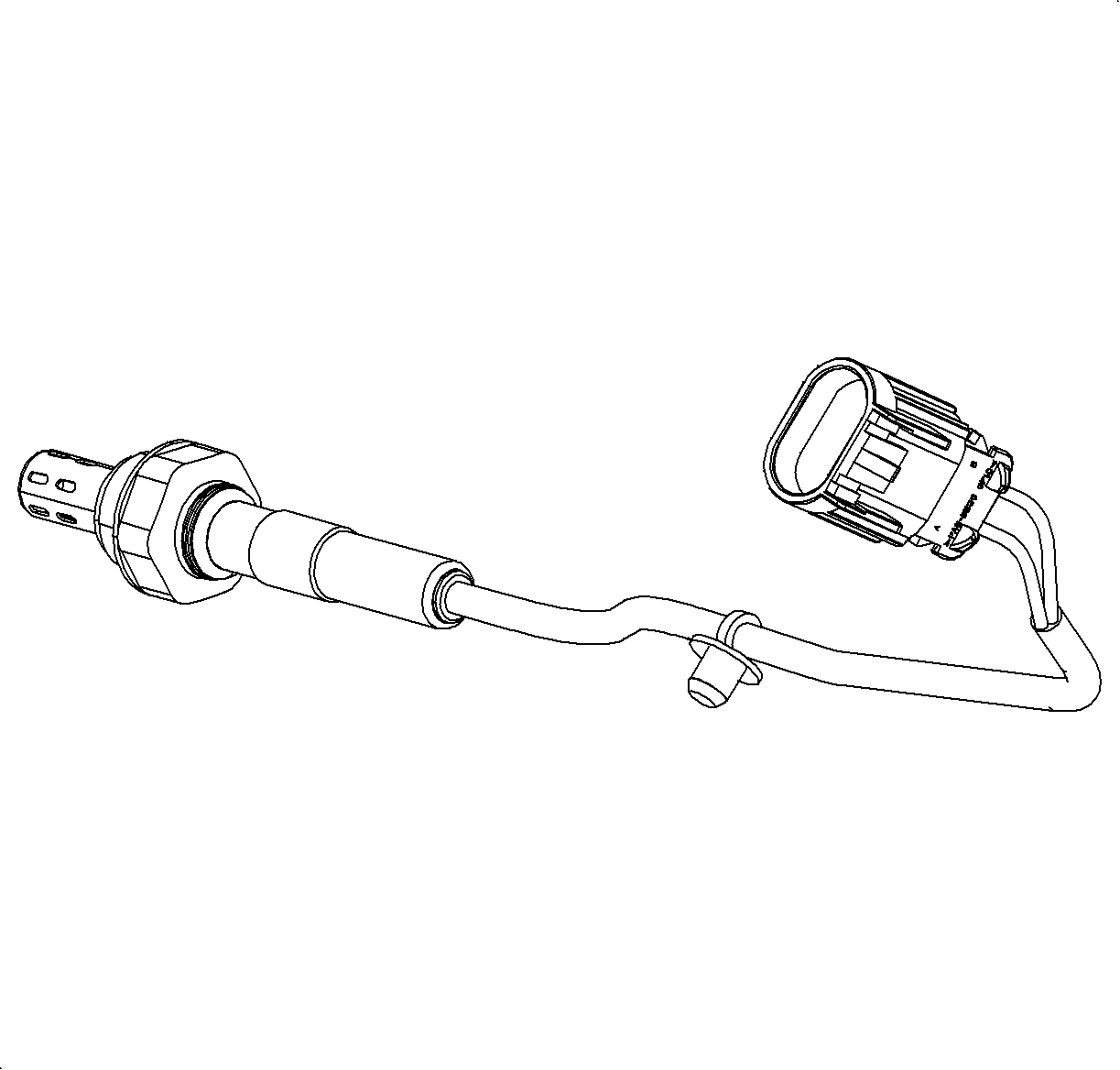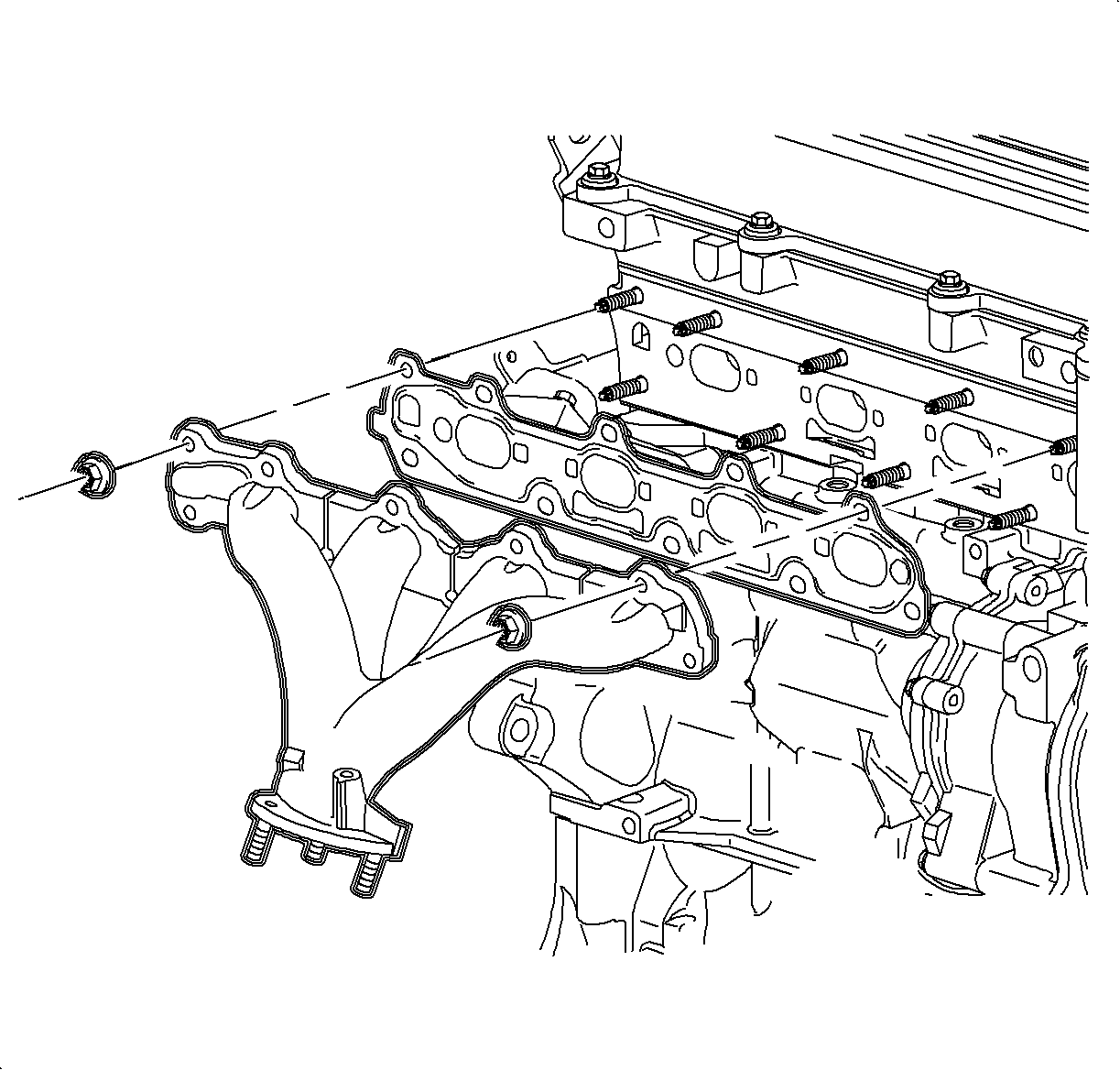Three-Way Catalytic Converter

The 3-way catalytic converter is an emission control device added to the exhaust system to reduce pollutants in the exhaust gas stream and requires the use of unleaded fuel only.
The 3-way catalytic converter coating contains platinum and rhodium which lowers the levels of oxides of nitrogen (NOx) as well as hydrocarbons (HC) and carbon monoxide (CO).
Periodic maintenance of the exhaust system is not required. If the vehicle is raised for other service, it is advisable to check the condition of the complete exhaust system.
Exhaust Manifold/Oxygen (O2) Sensor
The exhaust manifolds are cast iron. The oxygen sensor is located in the exhaust manifold of all engines.
Exhaust Manifold Pipe

The front exhaust pipe incorporates a stainless steel braided sleeve over a flexible bellows sections along with the catalytic converter. The entire pipe assembly is welded joint construction and is only serviced as an assembly.
Rear Heated Oxygen Sensor (HO2S) 2

The heated rear oxygen sensor, mounted behind the catalytic converter, monitors oxygen content in the exhaust to determine the efficiency of the catalytic converter. The heated oxygen sensor (HO2S) 2 is a four wire sensor; two of the wires heat the sensor (B+ and ground) and the other two wires are the signal reference and ground. The sensor acts as an electro chemical cell, or battery, to produce a voltage in response to the oxygen content in the exhaust. A bias voltage, voltage sent from the PCM, is between 350 mV and 550 mV which is the voltage the PCM will see when the sensor is inactive or cold. As the heater and the converter heat the sensor up to around 275°C (527°F), the sensor will produce its own voltage to counteract this bias voltage. Low voltage from the sensor indicates high oxygen content, lean mixture, whereas high voltage indicates low oxygen content, rich mixture. The wires to the sensor carry air reference which is used to compare differences in oxygen from the atmosphere to the exhaust stream.
The rear HO2S 2 will react slower than the front OS2 due to the oxygen storage in the catalytic converter. The rear oxygen sensor is used only for converter efficiency, not for A/F ratio control.
The rear oxygen sensor operates between 275°C (527°F) to 850°C (1562°F).
Exhaust/Resonator Pipe
The exhaust/resonator pipe is part of the production exhaust system and is serviced by a service only assembly.
Muffler
The muffler is part of the production exhaust system and is serviced by a service only assembly.
Hangers and Isolators
The exhaust system is supported by free hanging rubber mountings which permit some movement of the exhaust system but do not permit the transfer of noise and vibration into the passenger compartment.
The installation of exhaust system supports/isolators is very important as improperly installed supports/isolators can cause annoying vibrations which can be difficult to diagnose.
Clamps
Clamps are used for connecting the Saddle/U-bolt exhaust system slip joints.
Shields
The heat shields are aluminum; they prevent exhaust system head from penetration the floor of the vehicle or the fuel tank. Inspect the shields for cracks and tears. Shields must always be re-installed if they are removed for exhaust system or body repairs.
Exhaust Manifold Assembly - L61

The exhaust manifold assembly is made from cast iron. The exhaust manifold incorporates a split design which aids in head dissipation and provides attachment points for exhaust pipe and head shield.
Exhaust System Production
Make sure that there is adequate clearance between the components of the exhaust system and all points of the underbody to avoid possible overheating of the floor pan and possible damage to the passenger compartment insulation and trim materials.
Check the complete exhaust system and nearby body areas for broken, damaged, missing or mis-positioned parts, open seams, holes, loose connections, or other deterioration which could permit exhaust fumes to seep into the passenger compartment. Dust or water in the passenger compartments may be indication of a problem in one of these areas. Any damage should be corrected immediately.
Annoying rattles and noise vibrations in the exhaust system are usually caused by misalignment of parts. When aligning the system, leave all bolts or nuts loose until all parts are properly aligned, then tighten, working from the rear.
Periodic maintenance of the exhaust system is not required. When the vehicle is raised for service, check the general condition of the three way catalytic converter, pipes, mufflers, and heat shields. The steel used in the exhaust system is resistant to corrosion caused by exhaust gases, but rapidly shows surface corrosion on the outside. This surface corrosion is not a cause for replacement.
The installation of exhaust system supports is very important, since improperly installed supports can cause annoying vibrations which are difficult to diagnose.
Exhaust system performance complaints, such s excessive back pressure, are noticeable by their effect on engine performance. Other faulty vehicle components, such as emission control devices, have similar effects on engine performance and may be characterized by the same symptoms or complaints.
